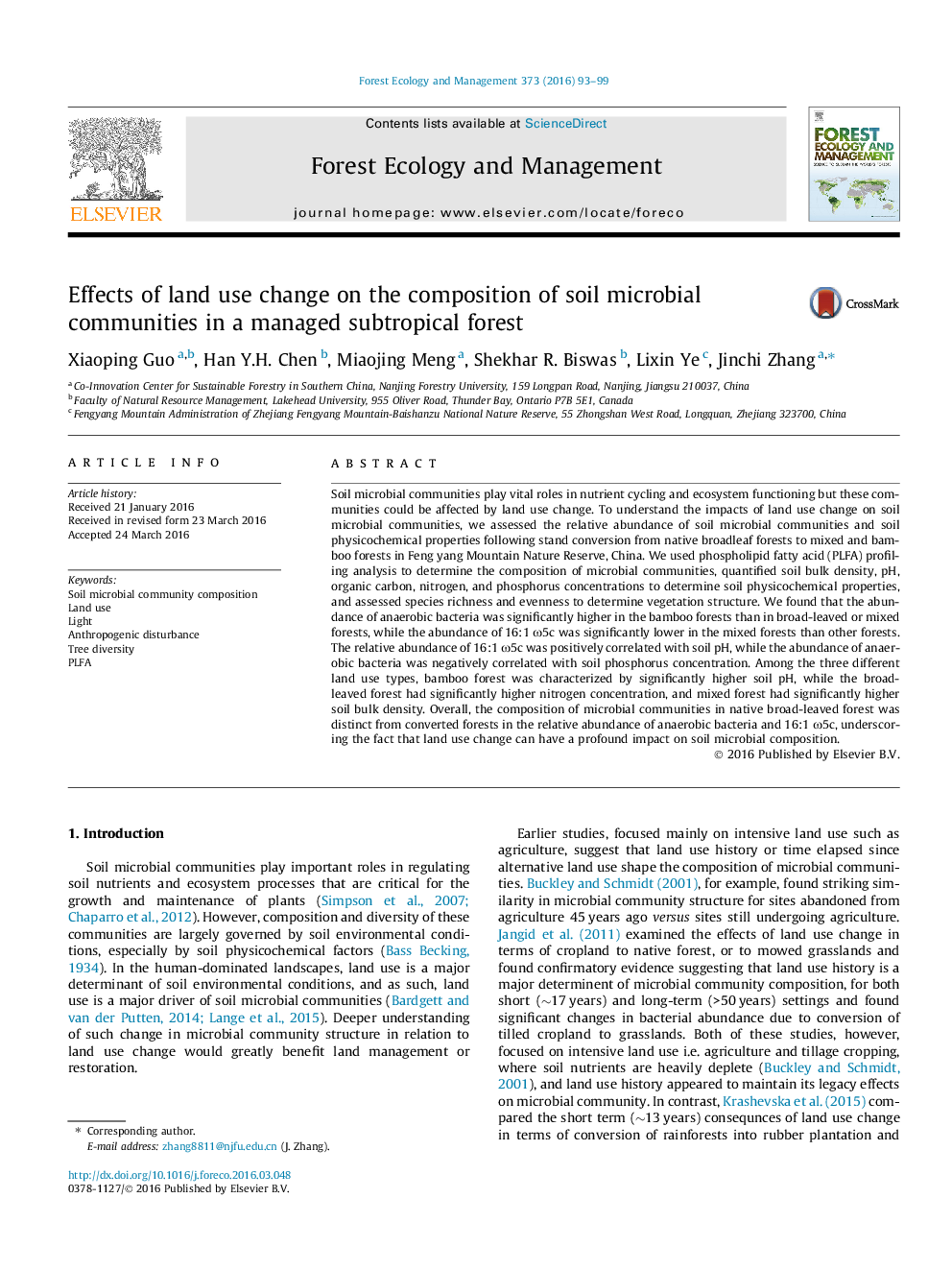| Article ID | Journal | Published Year | Pages | File Type |
|---|---|---|---|---|
| 6542243 | Forest Ecology and Management | 2016 | 7 Pages |
Abstract
Soil microbial communities play vital roles in nutrient cycling and ecosystem functioning but these communities could be affected by land use change. To understand the impacts of land use change on soil microbial communities, we assessed the relative abundance of soil microbial communities and soil physicochemical properties following stand conversion from native broadleaf forests to mixed and bamboo forests in Feng yang Mountain Nature Reserve, China. We used phospholipid fatty acid (PLFA) profiling analysis to determine the composition of microbial communities, quantified soil bulk density, pH, organic carbon, nitrogen, and phosphorus concentrations to determine soil physicochemical properties, and assessed species richness and evenness to determine vegetation structure. We found that the abundance of anaerobic bacteria was significantly higher in the bamboo forests than in broad-leaved or mixed forests, while the abundance of 16:1 Ï5c was significantly lower in the mixed forests than other forests. The relative abundance of 16:1 Ï5c was positively correlated with soil pH, while the abundance of anaerobic bacteria was negatively correlated with soil phosphorus concentration. Among the three different land use types, bamboo forest was characterized by significantly higher soil pH, while the broad-leaved forest had significantly higher nitrogen concentration, and mixed forest had significantly higher soil bulk density. Overall, the composition of microbial communities in native broad-leaved forest was distinct from converted forests in the relative abundance of anaerobic bacteria and 16:1 Ï5c, underscoring the fact that land use change can have a profound impact on soil microbial composition.
Keywords
Related Topics
Life Sciences
Agricultural and Biological Sciences
Ecology, Evolution, Behavior and Systematics
Authors
Xiaoping Guo, Han Y.H. Chen, Miaojing Meng, Shekhar R. Biswas, Lixin Ye, Jinchi Zhang,
